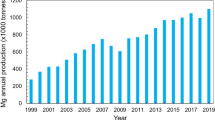Abstract
The changes in the plastic properties and the mode of fracture were examined with highly textured Zircaloy under strain-controlled push-pull cyclic loading condition. Since the loading direction was nearly normal to the (0002) poles of hcp structure, deformation occurred predominantly by prism slip. Different twinning systems were also activated when the sign of shear stress changed. The magnitude of plastic anisotropy also changed differently for warm cross-rolled and recrystallized materials. In spite of these structural anomalies, the Coffin-Manson relationship was obeyed, independent of the particular method used for control of diametral strain limits. Depending on the particular orientation of specimen surface, the process of crack initiation could be closely related to the detailed slip morphology. The crack propagation, however, occurred in the direction normal to the surface where the corresponding plastic strain range was the largest. Twinning was also shown to contribute importantly to the process of fracture in the cyclic loading condition.
Similar content being viewed by others
References
W. F. Hosford, Jr. and W. A. Backofen: Fundamentals of Deformanon Processing, W. A. Backofen et al., eds., pp. 259–98, Syracuse Univ. Press, Syracuse, N. Y., 1964.
D. Lee and W. A. Backofen: Trans. TMS-AIME, 1966, vol. 236, pp. 1077–84.
D. Lee: Trans. ASM, 1968, vol. 61, pp. 742–49.
E. J. Rapperport and C. S. Hartley Trans. TMS-AIME, 1960, vol. 218, pp. 869–77.
F. D. Rosi, F C. Perkins and S. S. Seigle Trans. AIME, 1956, vol 206, pp. 115–23.
R. E. Reed-Hill: Deformation Twinning, R. E. Reed-Hill et al., eds., pp. 295–320, Gordon and Breach, N. Y., 1964.
W. G. Dorfeld and D. Lee. Met. Trans., 1970, vol. 1, pp. 321–22.
R. K. McGeary and B. Lustman: Trans. AIME, 1951, vol. 191, pp. 994–1002.
T. Slot, R. H. Stentz, and J. T. Berling Am. Soc. Test. Mater., Spec. Tech. Publ., 465, pp. 100–28, ASTM, Phdadelphla, Pa., 1969.
D. C. Lord and L. F. Coffin, Jr.: Am. Soc. Test. Mater., Spec.Tech. Publ 465, pp. 129–48, ASTM, Philadelphia, Pa., 1969.
L. F. Coffin, Jr.: Trans. TMS-AIME, 1959, vol. 215, pp. 794–807.
C. E. Feltner and C. Laird: Acta Met, 1967, vol. 15, pp. 1621–53.
J. Morrow: Am. Soc Test. Mater., Spec. Tech. Publ. 378, pp. 45–84, ASTM, Philadelphia, Pa, 1965.
See also, J. C. Grosskreutz: To be published in the Am. Soc. Test. Mater., Spec. Tech. Publ. on Fatigue Damage.
L. F. Coffin, Jr.: Trans. ASME, 1954, vol. 76, pp. 931–49.
S. S. Manson: NASA Tech Note 2933, NASA 1954.
N. Thompson, N. Wadsworth, and N. Lowat: Phil Mag., 1956, vol 1, pp. 113–26.
T. H. Alden and W. A. Backofen: Acta Met, 1961, vol. 9, pp. 352–66.
W. A. Wood, S. Causland, and K. R. Sargent: Acta Met., 1963, vol. 11, pp. 643–652.
A. J. McEvily and R. C. Boettner. Acta Met, 1963, vol. 11, pp. 725–43.
D. Lee and W. A. Backofen: Trans. TMS-AIME, 1966, vol. 236, pp. 1696–1704.
R. W. Armstrong and G. T. Home: J. Inst. Metals. 1962-63, vol. 91, pp. 311–15.
P. G. Partridge: Phil. Mag., 1965, vol. 12, pp. 1043–54.
C. J. Beevers and M. D. Halliday: Met. Sci. J., 1969, vol. 3, pp. 74–79.
M. R. Warren and C. J. Beevers: Met. Trans., 1970, vol. 1, pp. 1657–61.
L. F. Coffin, Jr.: Appl. Mater. Res., 1962, vol. 1, pp. 129–41.
See also, L. F. Coffin, Jr.: Fatigue-An Interdisciplinary Approach, J. J. Burke et al eds., pp. 173–176, Syracuse Univ. Press, Syracuse, N. Y., 1964.
S. S. Manson and M. H. Hirschberg: Fatigue-An Interdisciplinary Approach, J. J. Burke etal., eds., pp. 133–73, Syracuse Univ. Press, Syracuse, N. Y., 1964.
Author information
Authors and Affiliations
Rights and permissions
About this article
Cite this article
Lee, D. The role of plastic anisotropy in the fatigue behavior of zircaloy. Metall Trans 3, 315–322 (1972). https://doi.org/10.1007/BF02680611
Received:
Published:
Issue Date:
DOI: https://doi.org/10.1007/BF02680611




